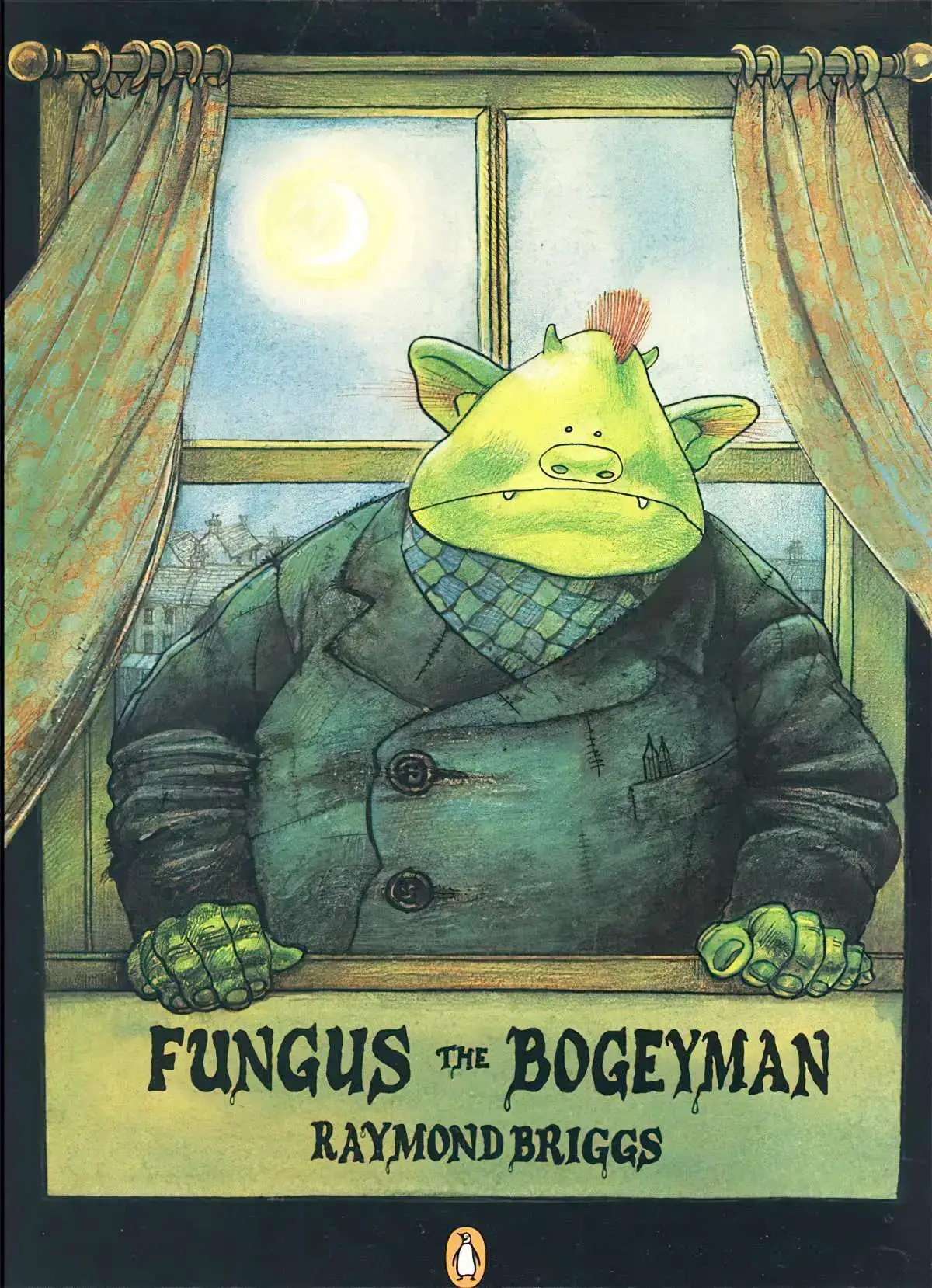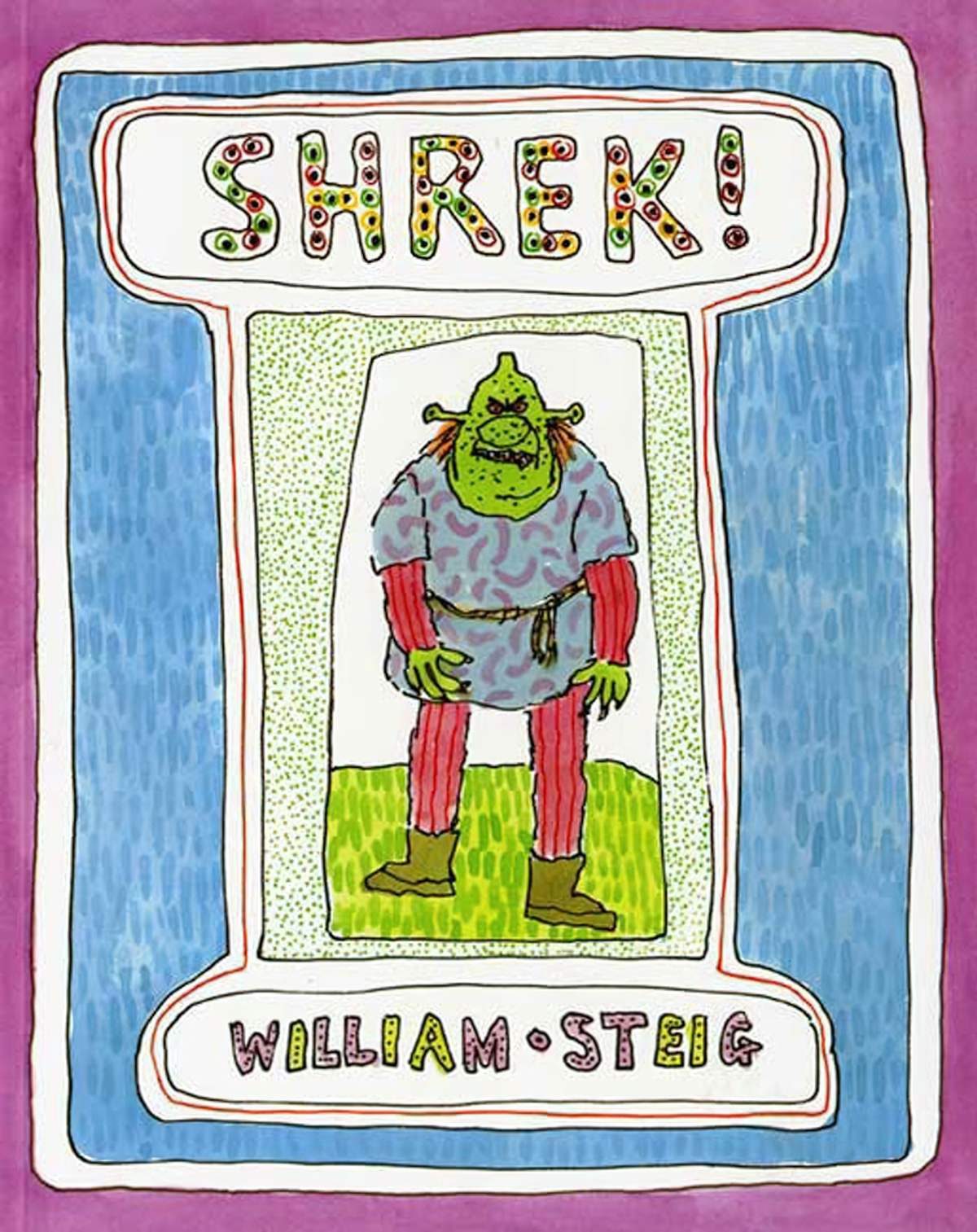Before Shrek was a DreamWorks movie franchise it was a 1990 picture book by American author-illustrator William Steig. Below, I analyse the picture book and along that way, I collected a bunch of Shrek facts you never asked for. Few of them are verified, but I have no reason to doubt Shrek’s biggest Reddit fans.
GIFT IDEAS FOR SHREK LOVERS
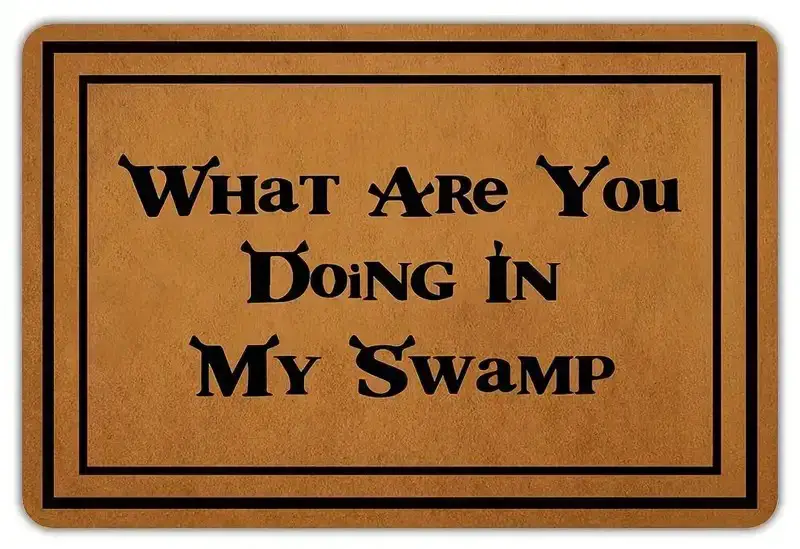

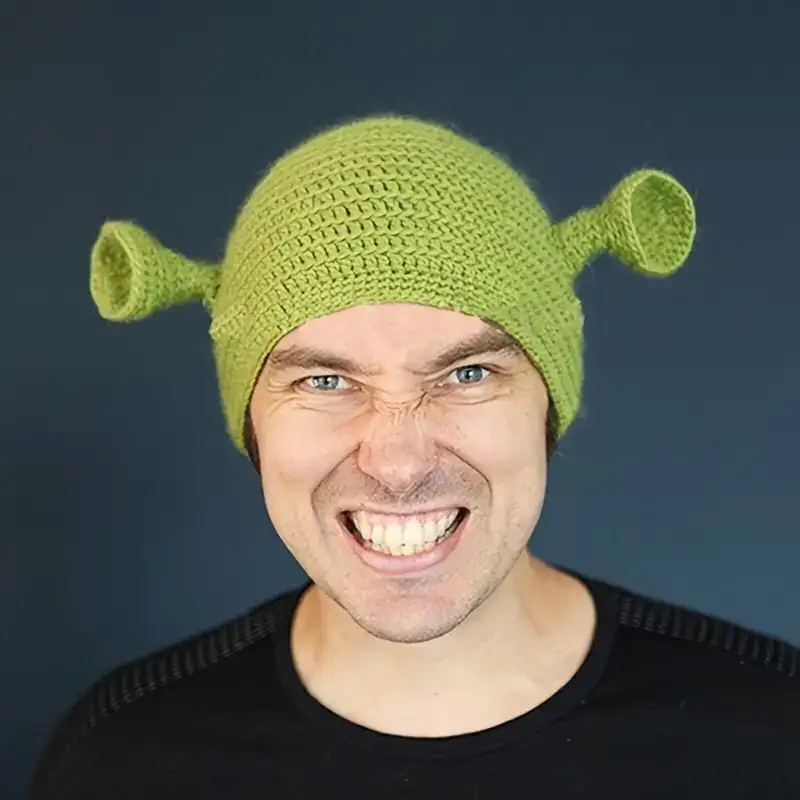
Search for:
- Welcome Entrance Doormat, Low Pile Indoor Outdoor Entrance Mat, Non-Slip Bathroom Mat Carpet, Washable Funny Welcome Doormat Home And Office Decorative Indoor Outdoor Kitchen Mat Non-Slip Rubber
- 4pcs Shrek Ear Shape Charms Shoe Decoration Charms Party Gifts Upgraded Soft Silicone Plus Size 2”5.08cm
- Men’s Hat Winter Green Cover Up Cartoon Anime Surprise Knit Lined Hat For Snow Cold Weather
Unfortunately I didn’t grow up with William Steig’s stories myself. On the plus side, I can still appreciate them as an adult. Steig’s children’s stories appeal to a dual audience, hence the awards:
- Publishers Weekly Best Children’s Books of the Year
- Publishers Weekly Best Books of the Year
- School Library Best Books of the Year
- School Library Journal Best Books of the Year
Humour partly derives from Steig’s perfectly chosen idiomatic expressions. Writers are regularly urged to use language in original ways. But I remember our sociolinguistics professor talking about clichés. She urged us as students of linguistics not to despise the cliché. Cliched language is a highly efficient means of conveying information. We’re really talking about idioms here: Familiar word patterns which have contain layers of cultural associations.
When William Steig writes a picture book, his prose sounds like someone telling us an oral story. Listen to Shrek! read by actor Stanley Tucci here.
Reverse Cinderella. Just a bunch of rats and birds absolutely ruining a prince’s life until he is the perfect match for a local servant girl.
[cf. Shrek!]
@pairofclaws on Twitter 2022
SETTING OF SHREK!
An ambiguous fairytale world which is nonetheless European.
STORY STRUCTURE OF SHREK!
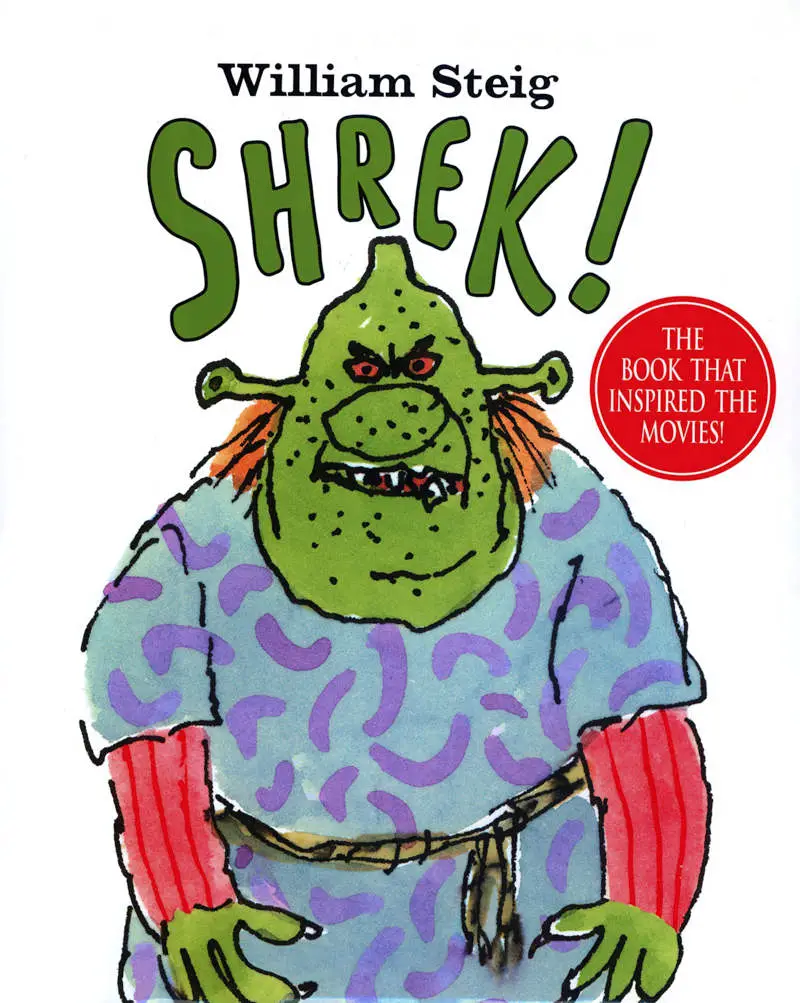
SHORTCOMING
I’d never given much thought to the biology of Shrek but in the picture book I learned that Shrek has noxious skin and hatched from an egg. So I guess he’s a reptile or amphibian. (Reptiles have scales, and their skin is dry. Amphibians do not, and their skin is often moist with mucus, which keeps them from drying up.)
Shrek is a churlish and horrid ogre who is extremely repulsive not only to people, but also to all animals and plants. He can “spit blasts of fire a full ninety-nine yards and vent smoke from either ear” and his glare can warm up things.
He is also shown to be almost fearless and very powerful, maintaining an evil smile for most of the book and proving capable of defeating a dragon, an armored knight and even nature forces.
Villains Wiki
His main issue is that everyone is scared of him. William Steig was Romanian Jewish American. Apparently the name Shrek comes from the German word ‘Schreck’ which means fright or terror.
- verschrecken: (v) to be shocked or scared of something, jump in fright, to scare someone away
- schrecklich: (adj) adjective, terrible
- schreckhaft: (adj) easily frightened
- Schrecken: (n) noun, a fright, a terror
(Danish has skræk, Dutch has schrik, Afrikaans has skrik… Bavarians might call ugly people a Schrek.)
For Bojack Horseman fans: Schrek is related to The Secretariat character, who is on the receiving end of the insult “Secreterrible”. In the German translation of Bojack Horseman, this becomes Schreckretariat.
THE TWO (IN)FAMOUS SCHREKS
Max Schreck was a German actor who played Graf Orlok in Nosferatu (1922). Although Max was his stage name, Schreck was his actual surname. His full birth name was Friedrich Gustav Maximilian Schreck.
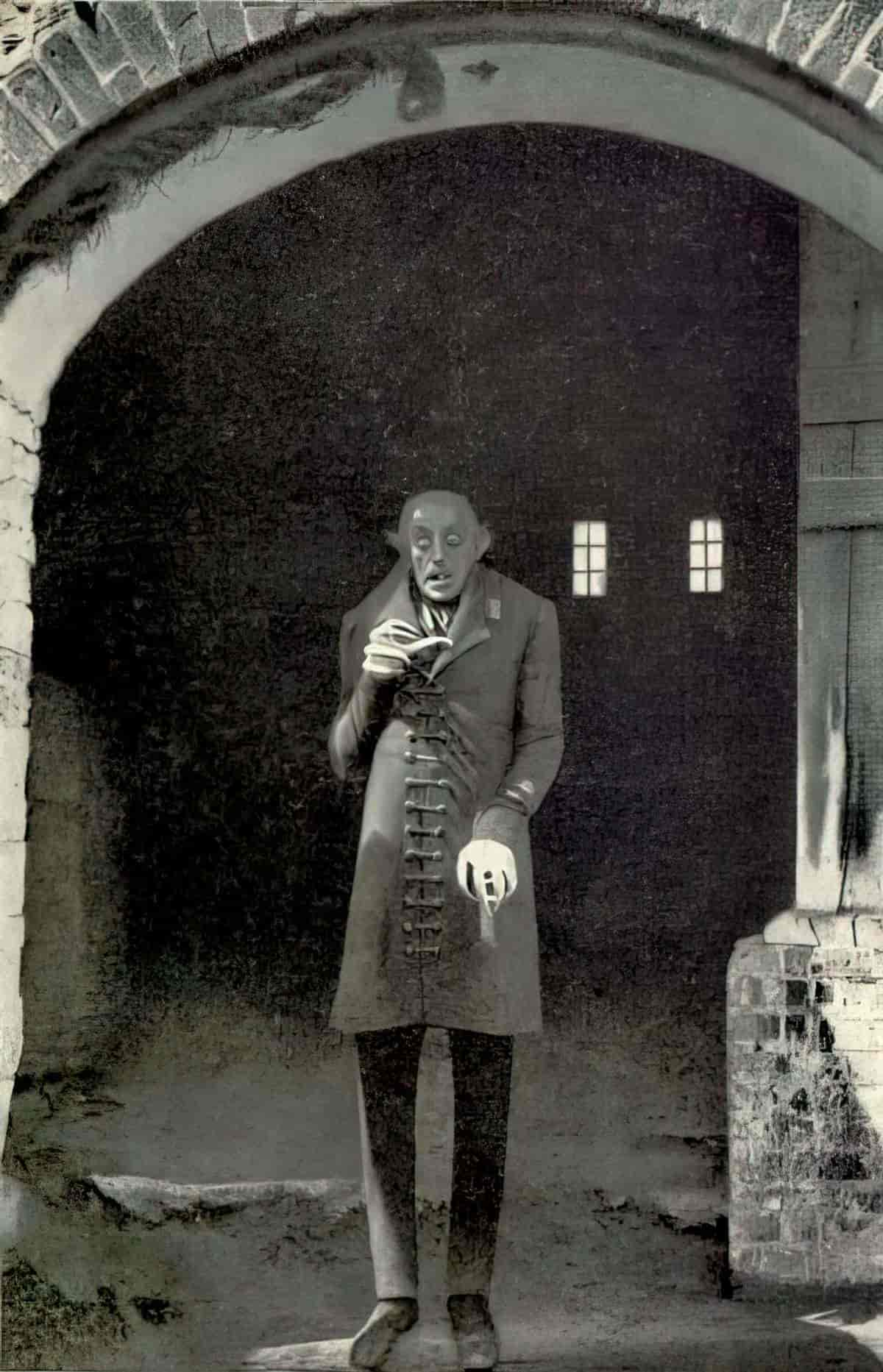
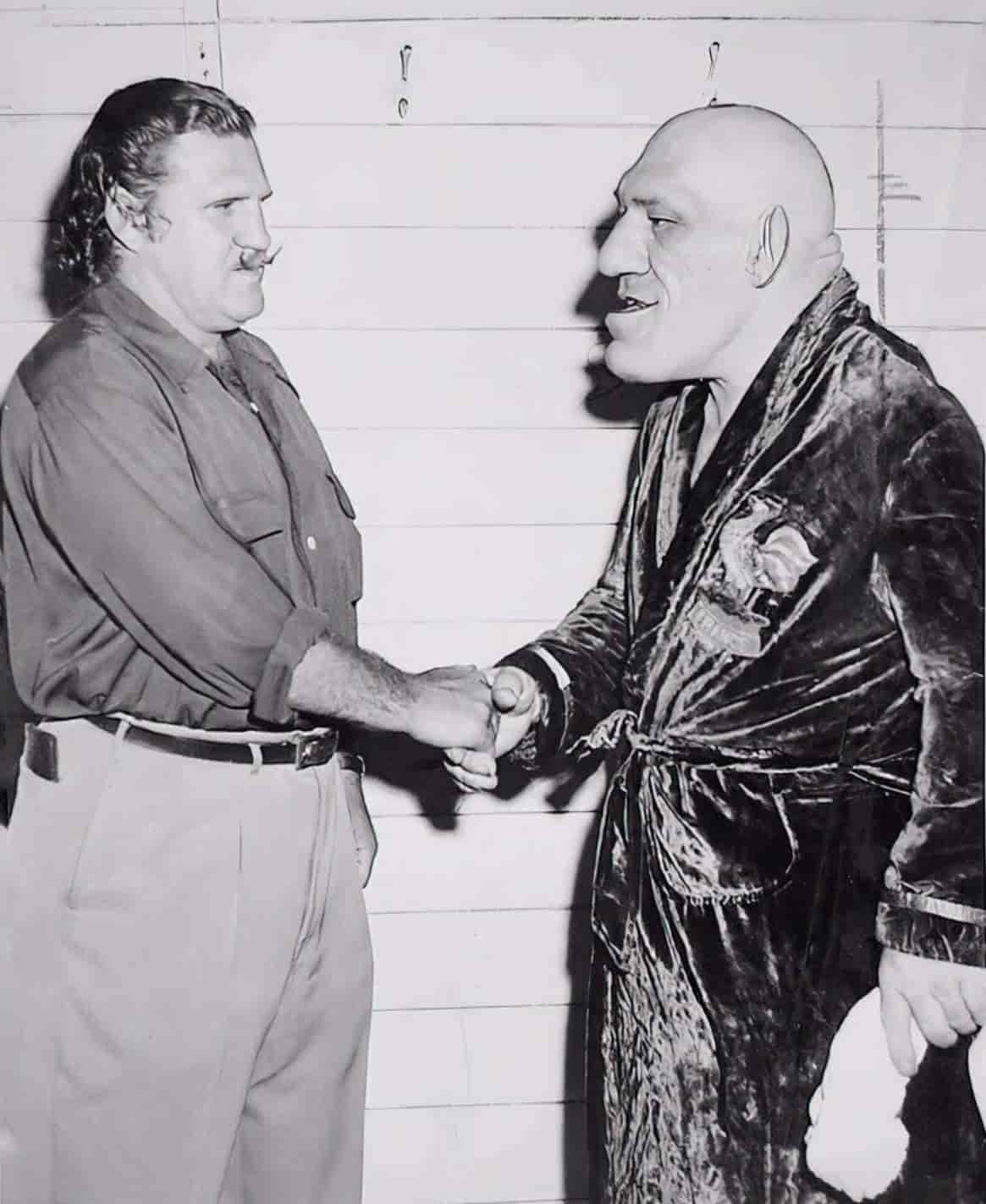
Steig’s Shrek has got the dad-bod, the claws, the boots like Max Schreck in Nosferatu. Shrek also has… what do I ask for at the barber’s? A number zero red mullet? Perhaps the redness of Shrek’s hair is partly what led to the Scottish-ness of the movie Shrek.
That’s not the main reason, though. The guy originally lined up to voice Shrek died. Mike Myers stepped in. Mike Myers has a working-class Canadian accent which just didn’t work. The Shrek story is set in the world of European fairytale, and Myers’ mother used to read to him in a Scottish accent, so he did that.
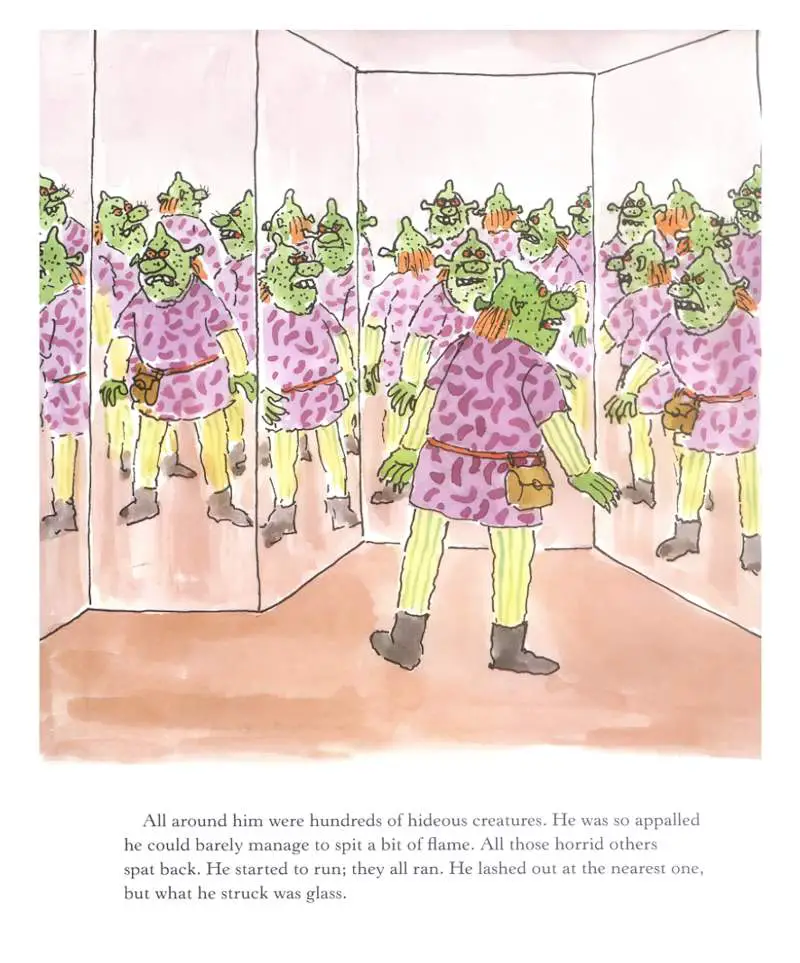
The other well-known Schrek is Julius Schreck, bodyguard and driver to Hitler. He died at the age of 37 in 1926, but not in glorious battle or because of assassination or anything like that. No, Julius Schreck died of meningitis. Apparently Hitler was very sad to lose his bestie and gave the guy a state funeral. Julius Schreck is today remembered as ‘Adolf Hitler’s first SS Man’.
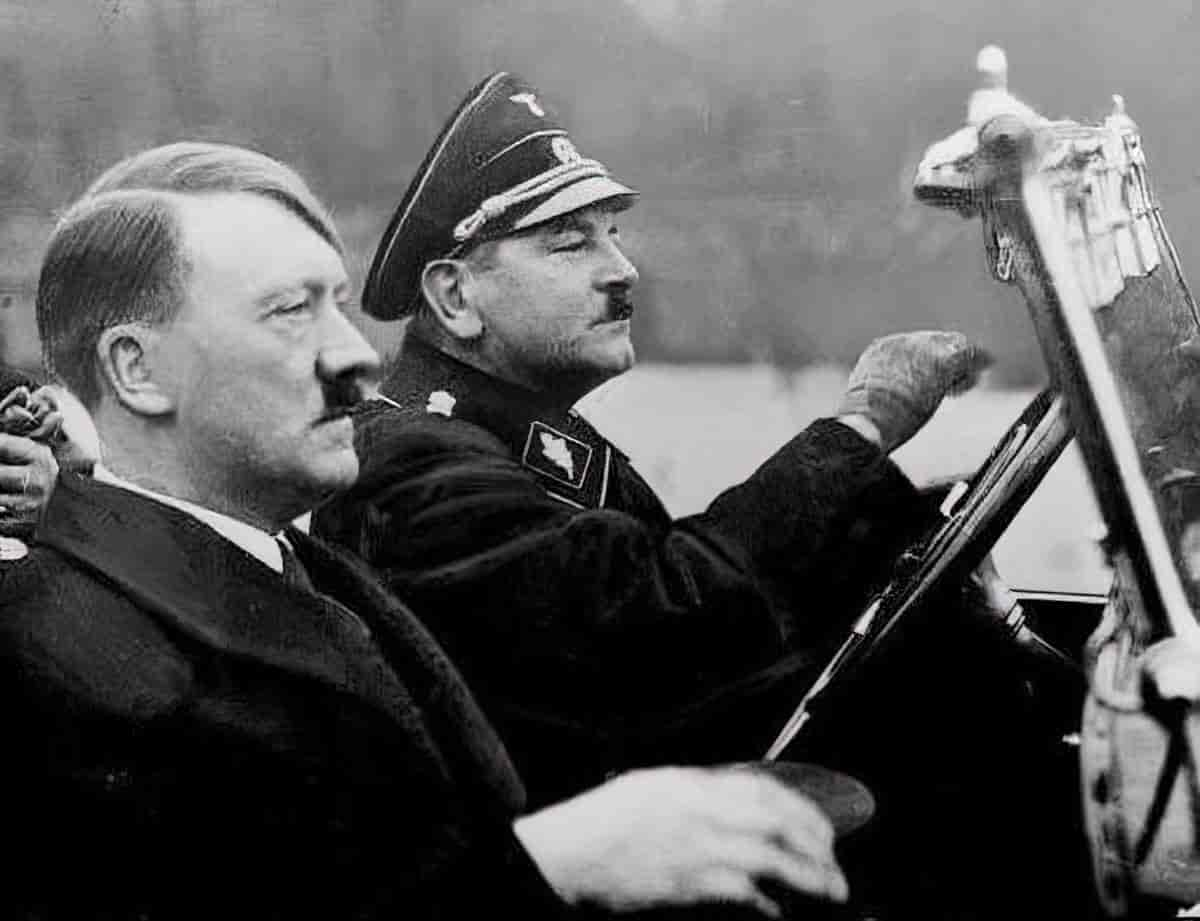
Continuing with the war theme, the Panzerschreck was the popular name for Germany’s Rocket Anti-armor Rifle Model 54 based on the American bazooka. The nickname means ‘tank fright’.
DESIRE
Shrek gets kicked out of home cf. The Three Little Pigs. But in a fairytale inversion of the trope where a young man sets off into the big, wide world to ‘make his fortune’, Shrek’s parents kick him out of the hole so he can inflict damage. (The same thing, one might argue, in our post-capitalist era.)
So off Shrek trots on a classic mythic journey, where he will meet foes and allies along the way.
OPPONENT
The first character Shrek meets is a witch in a copse, cooking up a brew in a cauldron. Ironically, given as how everyone so far is disgusting and unkempt, the witch is reciting a song clearly meant to be sung to the tune of “This is the way we wash our hands”.
In exchange for some of Shrek’s parasites, which this witch needs for her brew, she tells Shrek’s fortune in rhyme. He learns he will marry someone even uglier than himself! That’s after riding a donkey which leads him to a knight where he’ll have to conquer the knight in a fight.
So there we have it, folks. End the story here if you want.
For those still reading, Shrek has the hormonal profile of a normative teenage boy and hears nothing about the knight and the fight. He’s hopped up on the thought of finding a girl. So he continues on his way.
Next, Shrek comes across a peasant with a scythe, which in another sort of tale might signal the Grim Reaper. Shrek addresses this young fellow as ‘varlet’, which I had to look up: a man or boy acting as an attendant or servant; also, a dishonest or unprincipled man. Next, Shrek insults the guy by calling him a yokel. Shrek steals his lunch and moves on. (More words than I expected rhyme with ‘pheasant’.)
Shrek continues terrorising people wherever he goes.
The following line would elicit a chuckle if this picture book were read to adolescents:
Fat raindrops began sizzling on Shrek’s hot knob.
I literally have no idea what Steig means by ‘knob’. Nose?
Eventually Shrek comes to some woods because of course he does, this is a fairytale. Normally the woods would signal the bit where the main character goes deep into their own subconscious, meet their greatest fears and then comes out the other side a changed person.
But Shrek is the danger. What will happen to Shrek in the woods? Will this be some sort of Gruffalo plot? He’ll have to meet his princess and the knight at some point. Will he meet them in the woods?
First he encounters a ‘whopper of a dragon’.
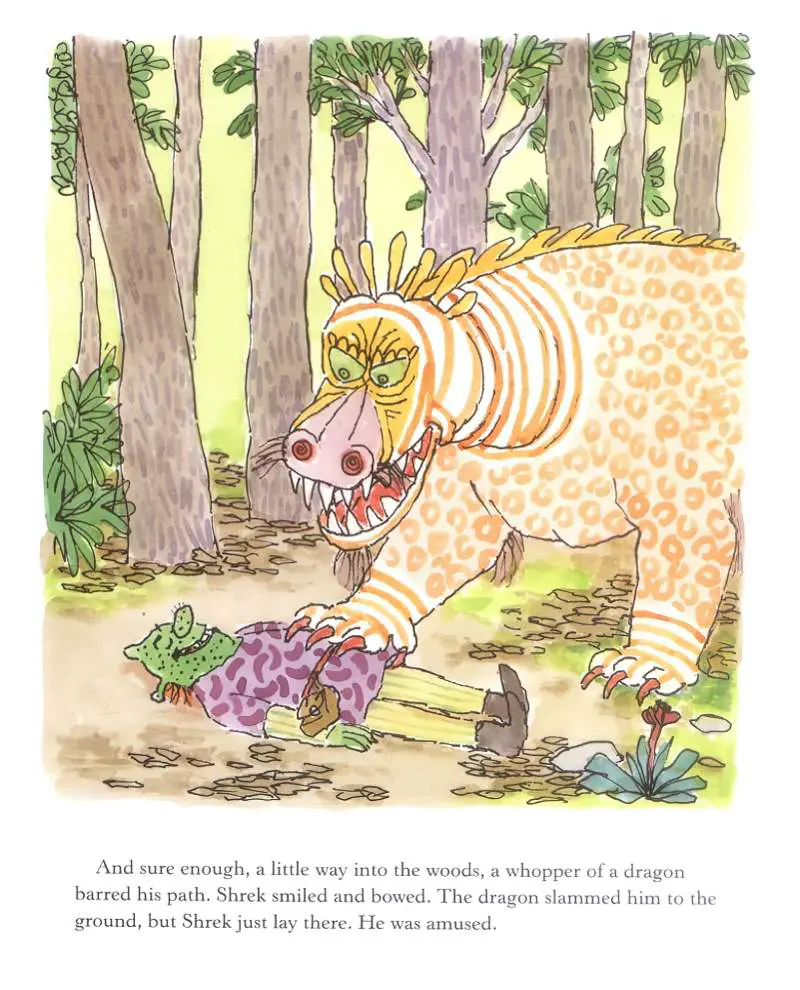
Shrek is about as ruffled as Hannibal Lecter hatching his big escape and defeats the dragon with electricity or something which comes out of his eyes. (He previously swallowed thunder and lighting, which may explain the superpower.)
For some reason which William Steig handwaves away, Shrek falls asleep and wakes up in what normies might regard some kind of paradise, but which Shrek finds irritating. He’s got kids dancing all around him. They’re not scared of him, either. Without natural frightening abilities, Shrek doesn’t have much going for him. He’s the Tony Soprano of fairytale world.
This is the bit where Shrek meets donkey. The verbosity of the donkey will be retained and extended in the film adaptation. The most irritating thing about this donkey, though, is that he speaks in rhyme. And the rhyme isn’t very good. Shrek tells him to stop jabbering and starts riding him. I fully agree. This donkey needs to stfu.
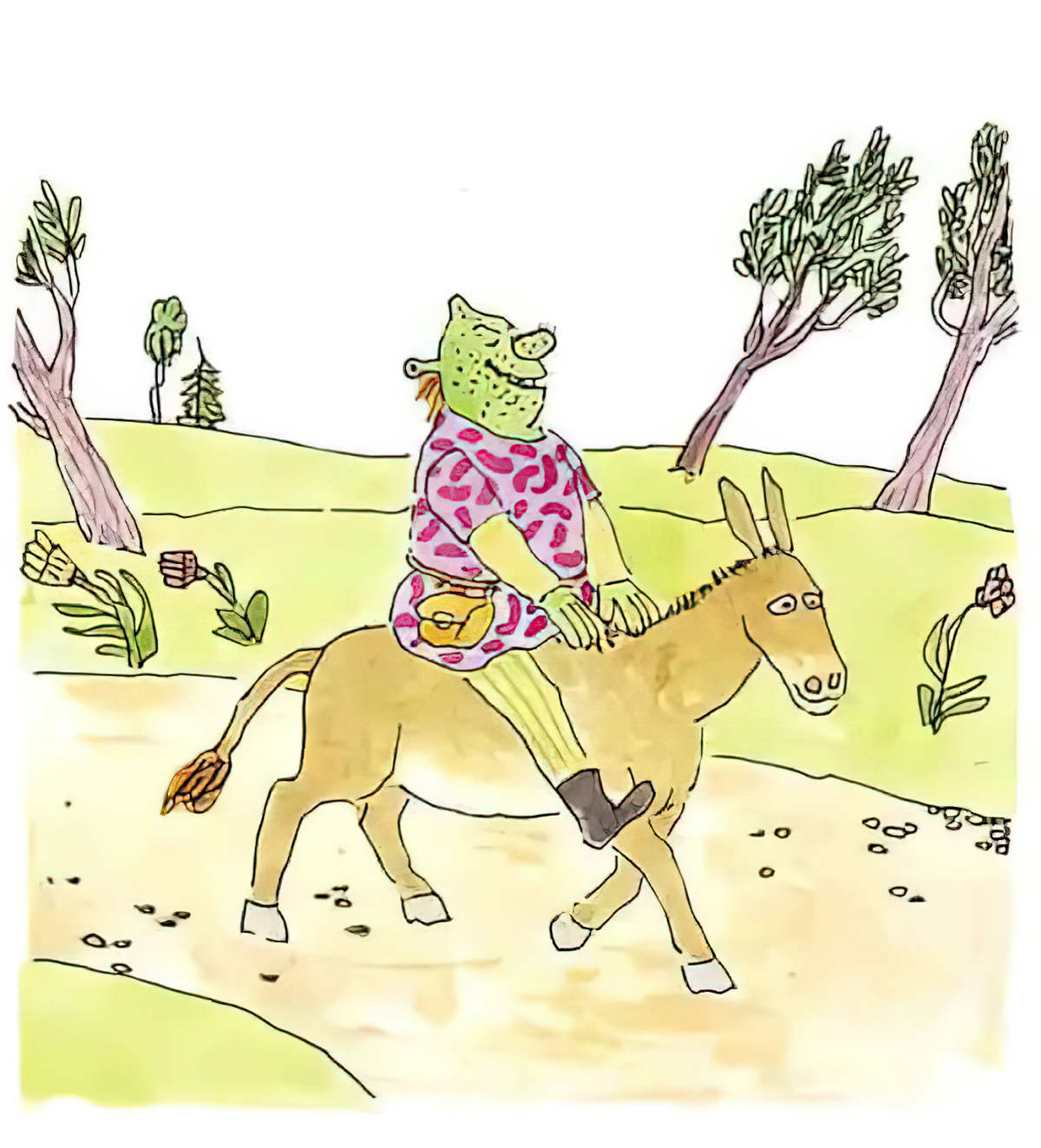
Literally any other creature riding donkeys: suddenly very weird
But look at the donkey’s widdle face. He looks well and truly chastised. He considered himself a poet!
Shrek makes short work of a knight guarding a castle.
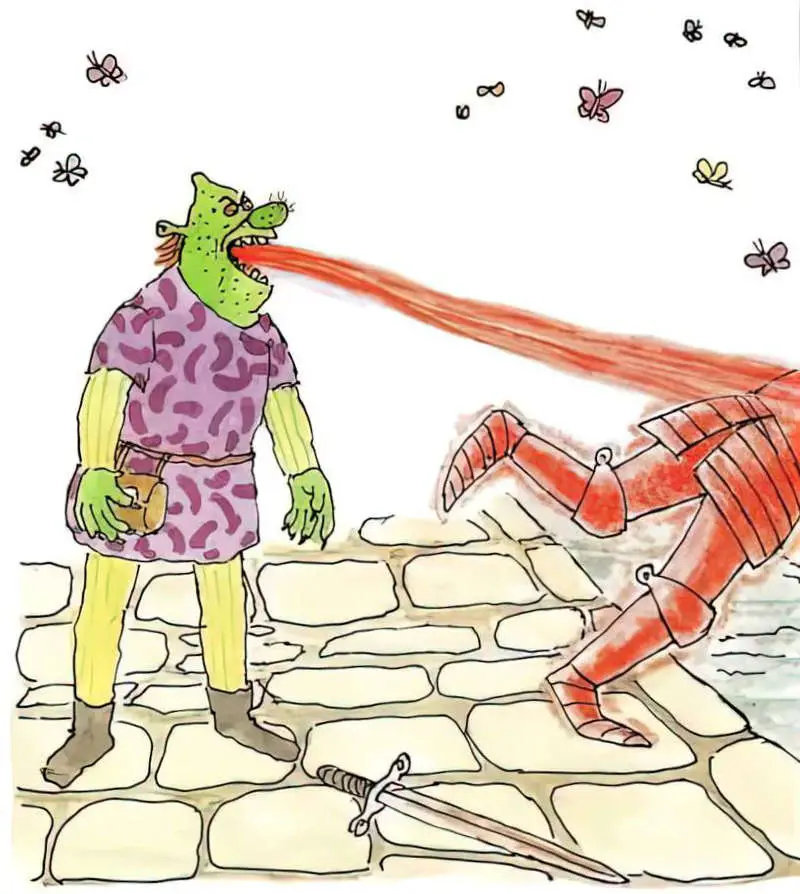
THE BIG STRUGGLE
Inside the castle Shrek meets the hall of carnival mirrors, reflecting an army of himself right back at him. Now he’s scared. Guess he’s never caught sight of himself before. (The same gag is used in various stories, including at the climax of Scarface Claw by Lynley Dodd.)
ANAGNORISIS
But when Shrek realises he’s looking at his own ugly self, he’s happier than ever to be exactly what he is.
Now he meets Fiona, ‘the most stunningly ugly princess’ on the surface of the planet.’
The princess exclaims ‘cock-a-doodle-doodle’ as soon as she claps eyes on him. One wonders why? I mean, that’s not a normal thing to say, is it? But here’s the nice inversion: This horny princess admires Shrek’s disgusting attributes in an unabashed display of desire.
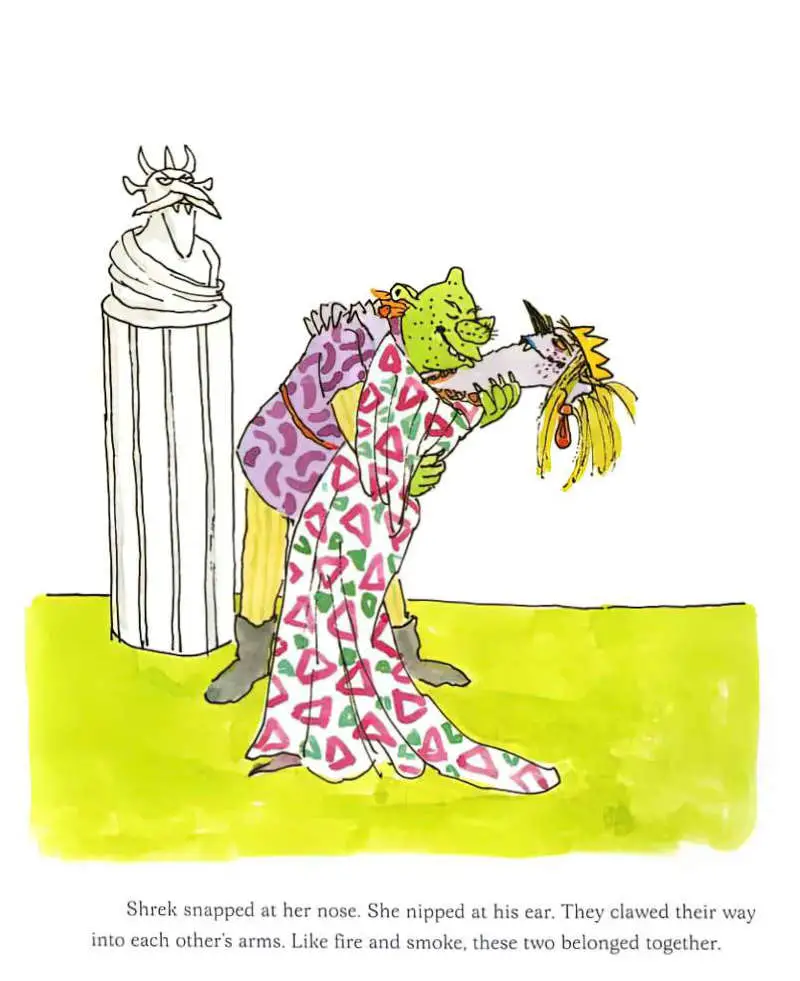
NEW SITUATION
“Marriage”. Fortunately the intervening scene is redacted. They live ‘horribly ever after’.
EXTRAPOLATED ENDING
William Steig has inverted numerous fairytale tropes in his story, including the gender inversion in which Fiona openly drools after her prince rather than the other way around, objectifying the masculine-coded character for a change.
But as I keep concluding, inversion does not equal subversion. This is more clear in the film than in the book, in which Fiona is beautiful during the day and ugly overnight, but the inadvertent messaging is also this: Know your level, kids. Ugly people wind up with other ugly people.
A truly subversive ending would involve a classically beautiful prince falling for an ugly princess, then living happily ever after. But that is so far outside our understanding of how love and desire works that audiences would be left with wtf DreamWorks eyebrow quirks.
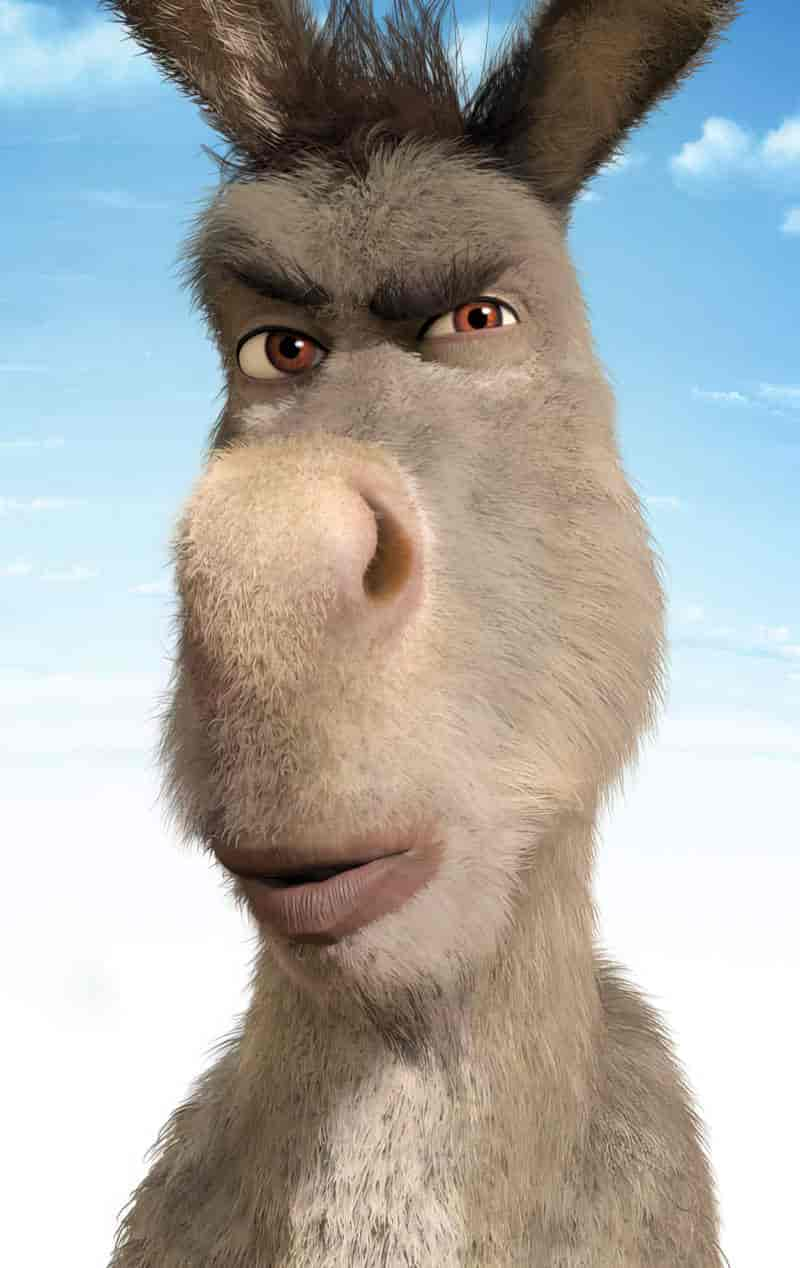
RESONANCE
SHREK THE MOVIE
Steven Spielberg bought the movie rights to Shrek! in 1991 but never got to make it. If Spielberg had made it, Shrek would have been traditionally animated with Dan Ackroyd voicing the character of Shrek. Spielberg’s first animated feature film ended up being Tin Tin instead. (This makes me glad he didn’t get to make Shrek.)
DreamWorks got a hold of the rights but no one predicted the massive hit it would become:
Dreamworks animators who failed on other projects were sent to work on ‘Shrek’ (2001). It was known as the Gulag, and employees called the experience being “Shreked” It went on to gross $484M and became the first film to win Best Animated Feature at the Oscars
@FactsonFilm
William Steig died in October 2003, two years after the release of the first Shrek film. When asked what he thought of the movie adaptation, William Steig said, “It’s vulgar, it’s disgusting and I love it!” (It probably helped that the films led to a dramatic increase in book sales.)
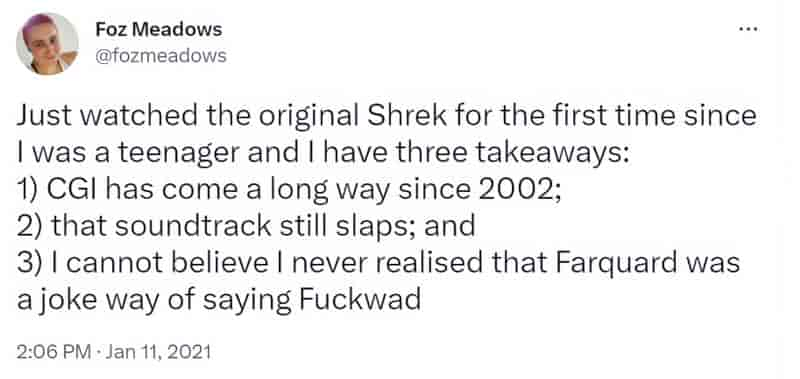
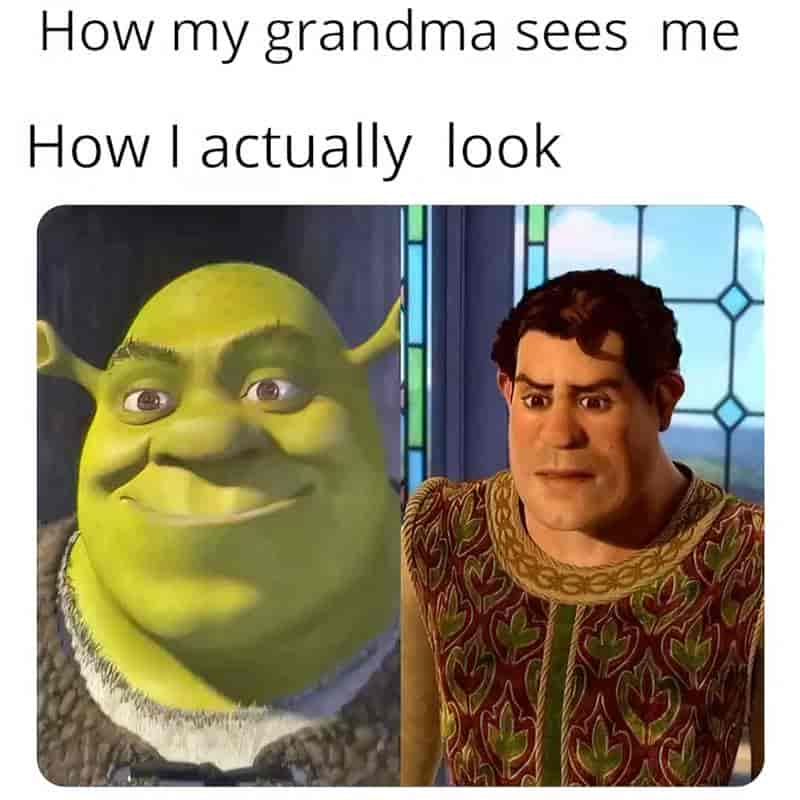
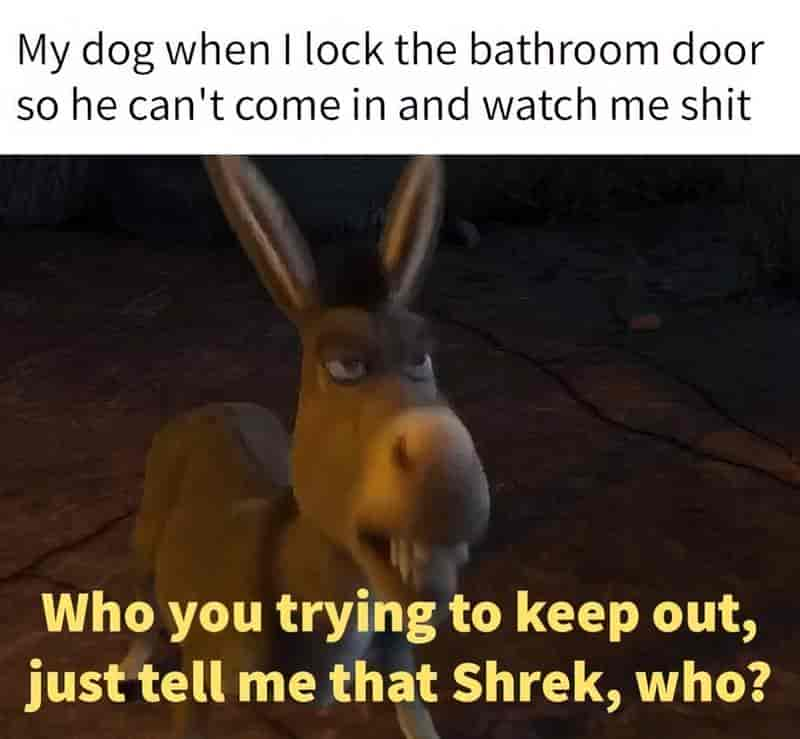
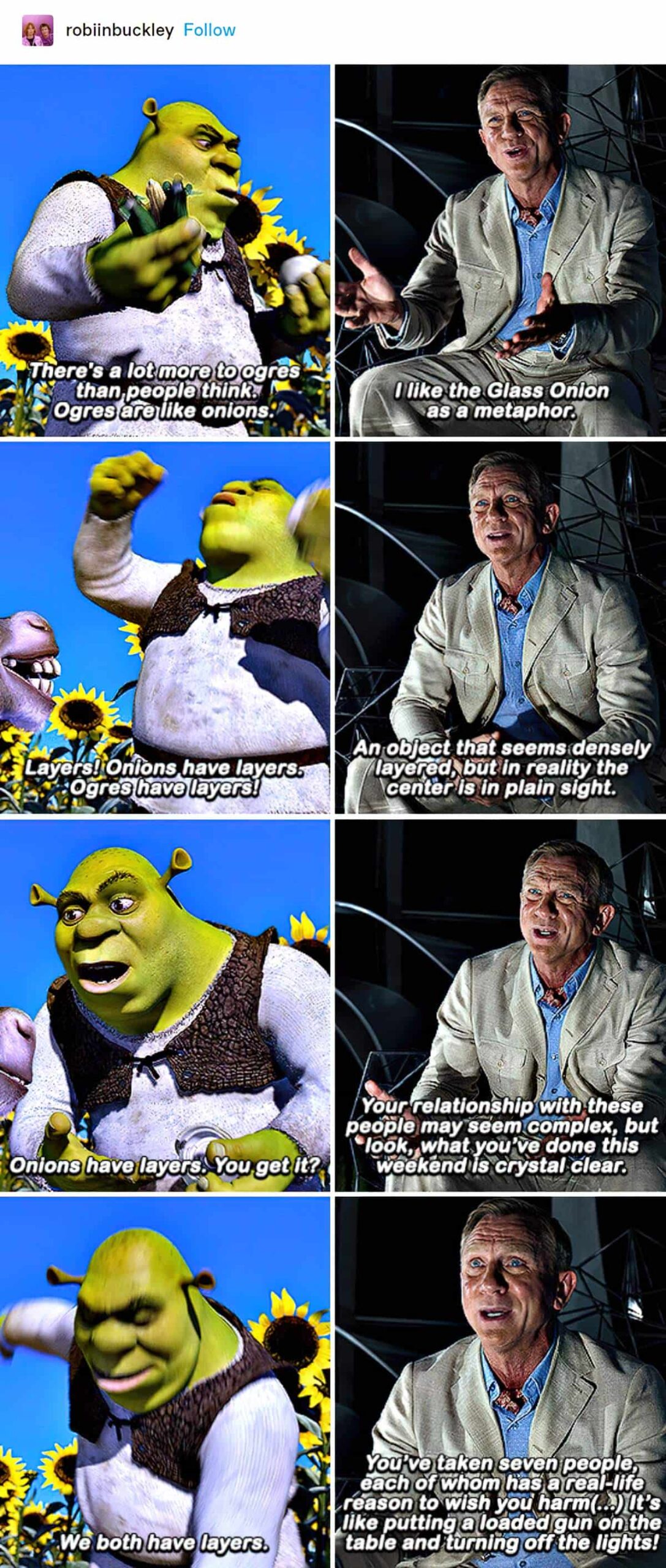
FOR FURTHER INVESTIGATION
3CGI got over 200 people to remake Shrek. This is it:
Episode 79 of the Verbal Diorama podcast is about Shrek
Fungus the Bogeyman by Raymond Briggs (1977) is an earlier picture book featuring a similar sort of character — an ugly green creature as caricature of a middle-aged dude. Fungus is a ‘bogey’, a vile, slimy, smelly creature who loves disgusting things.
